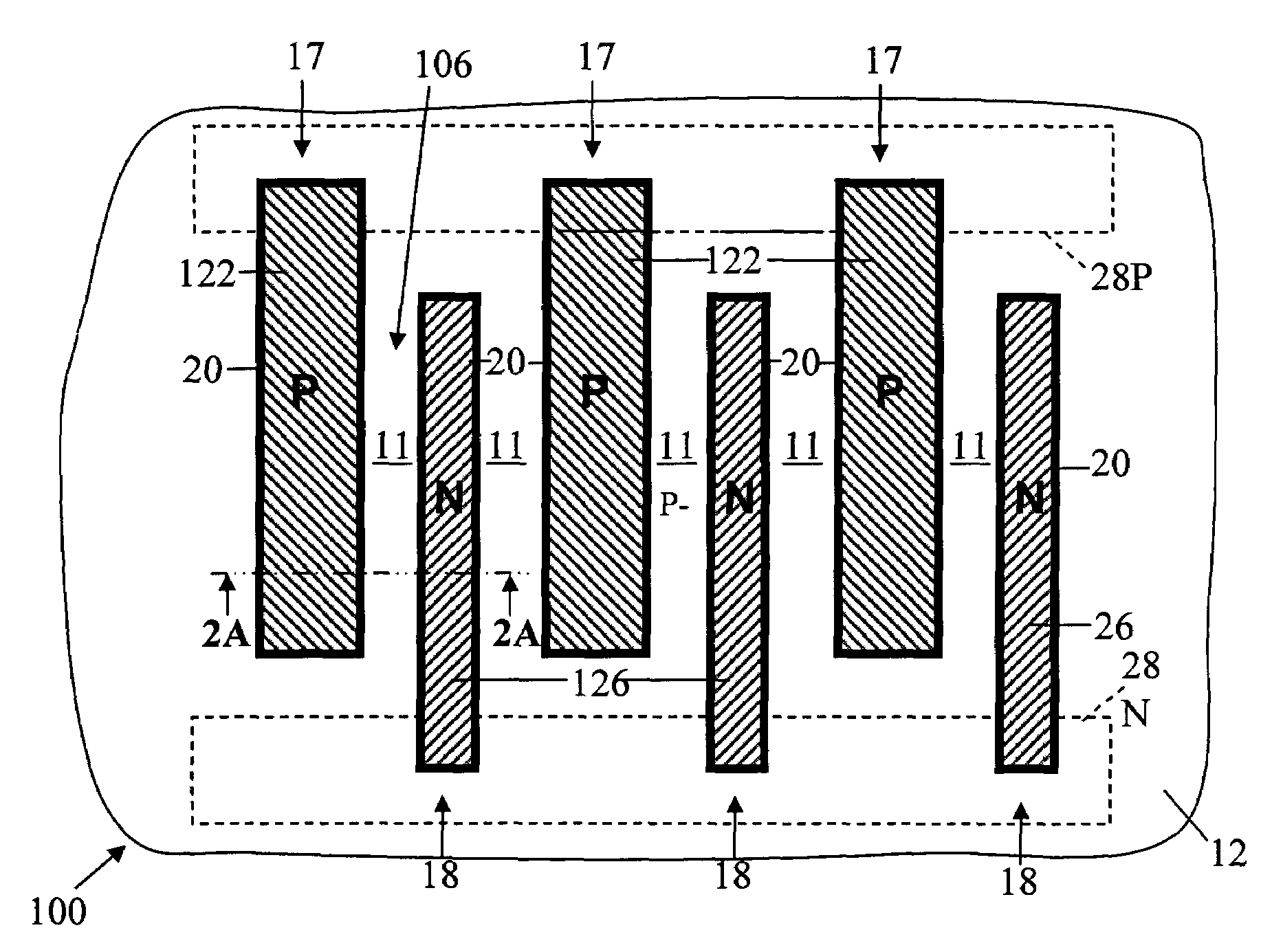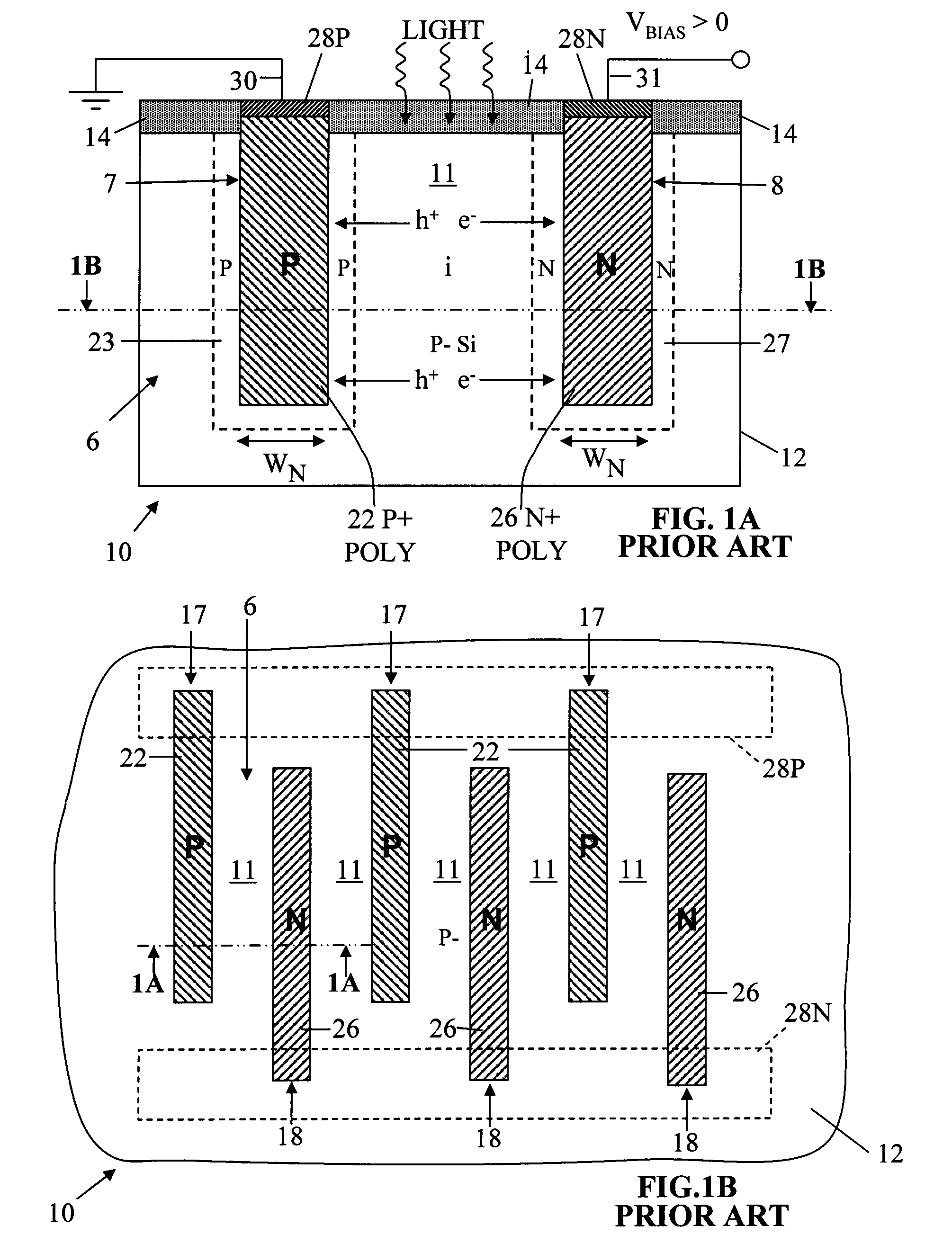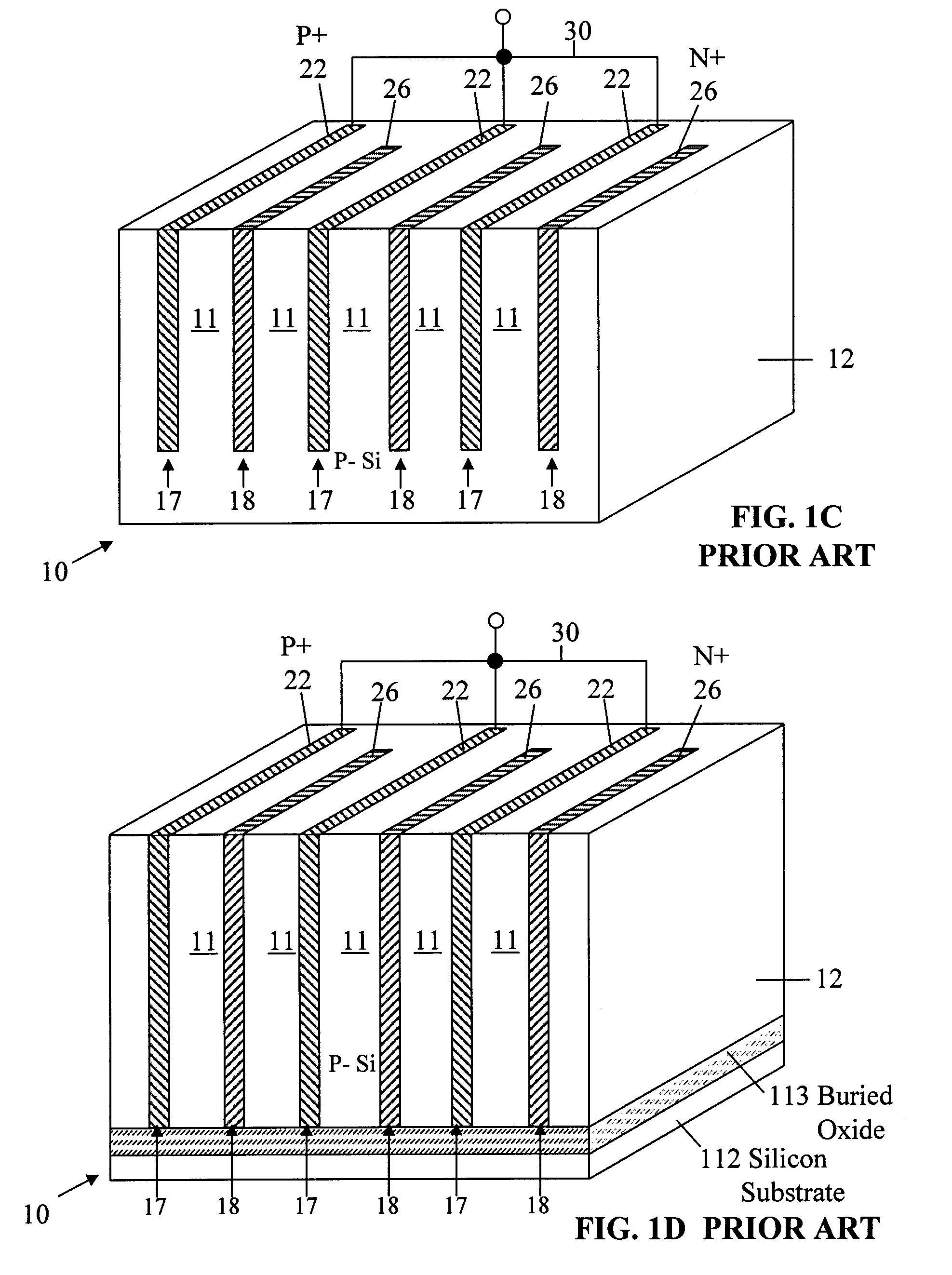Trench optical device
a technology of optical devices and clamps, applied in the direction of transistors, solid-state devices, semiconductor devices, etc., can solve the problems of complex and costly methods, difficult process control, complex and costly, etc., to avoid complexity, reduce susceptibility to defect generation, and process control easy
- Summary
- Abstract
- Description
- Claims
- Application Information
AI Technical Summary
Benefits of technology
Problems solved by technology
Method used
Image
Examples
second embodiment
[0129]FIGS. 5A and 5B show sectional and plan views of a modified lateral trench, p-i-n diode photodetector manufactured by a modification of the process of FIGS. 2A–2B in accordance with this invention. FIG. 5A shows a sectional elevation taken along line 5A—5A in FIG. 5B of a single lateral trench p-i-n photodiode with a wide trench lined with epitaxial silicon. FIG. 5B shows an array of lateral trench p-i-n photodiodes connected in parallel taken along line 5B—5B in FIG. 5A.
[0130]FIG. 5A shows a sectional elevation of a modification of the single lateral trench p-i-n photodiode of FIG. 2A in which the wide trench 17 has been lined with a conformal epitaxial silicon layer 230 prior to formation of the node 222 of the second electrode. In accordance with this modification of the method of this invention, after the first trench filling material 126 (polysilicon) was removed from the wide trench 17, and a conformal epitaxial silicon layer was grown narrowing the wide trench 17.
[0131]...
PUM
 Login to View More
Login to View More Abstract
Description
Claims
Application Information
 Login to View More
Login to View More - R&D
- Intellectual Property
- Life Sciences
- Materials
- Tech Scout
- Unparalleled Data Quality
- Higher Quality Content
- 60% Fewer Hallucinations
Browse by: Latest US Patents, China's latest patents, Technical Efficacy Thesaurus, Application Domain, Technology Topic, Popular Technical Reports.
© 2025 PatSnap. All rights reserved.Legal|Privacy policy|Modern Slavery Act Transparency Statement|Sitemap|About US| Contact US: help@patsnap.com



